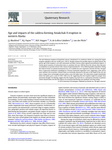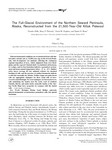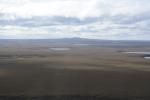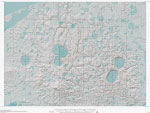Espenberg
Spurr
Great Sitkin
Akutan
Aniakchak
Atka volcanic complex
Augustine
Cleveland
Dutton
Edgecumbe
Fisher
Gareloi
Great Sitkin
Griggs
Iliamna
Isanotski
Kanaga
Katmai
Little Sitkin
Mageik
Makushin
Martin
Novarupta
Pavlof
Redoubt
Semisopochnoi
Shishaldin
Snowy
Spurr
Takawangha
Tanaga
Trident
Ugashik-Peulik
Ukinrek Maars
Veniaminof
Westdahl
Wrangell
Adagdak
Addington volcanic field
Alagogshak
Amak
Amchixtam Chaxsxii
Amukta
Andrew Bay volcano
Basalt of Gertrude Creek
Behm Canal-Rudyerd Bay
Black Peak
Blue Mtn
Bobrof
Bogoslof
Buldir
Buzzard Creek
Camille Cone
Capital
Carlisle
Chagulak
Chiginagak
Churchill, Mt
Cone 3110
Cone 3601
Dana
Davidof
Denison
Devils Desk
Double Glacier
Douglas
Drum
Duncan Canal
Emmons Lake Volcanic Center
Espenberg
Folsoms Bluff
Fourpeaked
Frosty
Gas Rocks, the
Gilbert
Gordon
Gosling Cone
Hayes
Herbert
Imuruk Lake Volc Field
Ingakslugwat Hills
Ingenstrem Depression Volcanic Field
Ingrisarak Mtn
Iron Trig cone
Iskut-Unuk River cones
Jarvis
Jumbo Dome
Kagamil
Kaguyak
Kasatochi
Kejulik
Kialagvik
Kiska
Klawasi Group
Knob 1000
Kochilagok Hill
Koniuji
Kookooligit Mountains
Koyuk-Buckland volcanics
Kukak
Kupreanof
Lone basalt
Maclaren River volcanic field
Moffett
Monogenetic QT vents of WWVF
Morzhovoi
Nelson Island
Nunivak Island
Nushkolik Mountain volcanic field
Okmok
Pavlof Sister
Prindle Volcano
Rainbow River cone
Recheshnoi
Roundtop
Sanford
Seguam
Segula
Sergief
Skookum Creek
St. George volcanic field
St. Michael
St. Paul Island
Steller
Stepovak Bay 1
Stepovak Bay 2
Stepovak Bay 3
Stepovak Bay 4
Suemez Island
Table Top Mtn
Tanada Peak
Tanax̂ Angunax̂
Tlevak Strait
Togiak volcanics
Trader Mtn
Uliaga
Ungulungwak Hill-Ingrichuak Hill
Unimak 5270
Unnamed (near Ukinrek Maars)
Vsevidof
Western Cones
Wide Bay cone
Yantarni
Yunaska
Legend
✕
| Red (Warning) | |
| Orange (Watch) | |
| Yellow (Advisory) | |
| Green (Normal) | |
| Uninstrumented | |
| Community | |
| Webcam | |
| Instrument | |
| Earthquake Magnitude | |
|
0
| |
| Earthquake Age | |
| Last 2 Hours | |
| Last 2 Days | |
| Last 1 Week | |
Facts
- Seismically Monitored: No
- Color Code: UNASSIGNED
- Alert Level: UNASSIGNED
- Elevation: 243m (797ft)
- Latitude: 66.3493
- Longitude: -164.333
- Smithsonian VNum:
- Pronunciation:
-
Nearby Towns:
- Shishmaref 49 mi (78 km) SW
- Deering 49 mi (79 km) SE
- Kotzebue 61 mi (98 km) NE
- Northwest Arctic Borough 61 mi (99 km) NE
- Mary's Igloo 86 mi (138 km) SW
Distance from Anchorage: 563 mi (906 km)
-
Subfeatures:
- Devil Mountain Lakes
- South Killeak
- White Fish Lake
- Devil Mtn
Description
From Wood and Kienle (1990) [1] : "These are among the northernmost volcanoes in North America, being just south of the Arctic Circle. The basalt field contains 5 maars and 5 small shield-shaped volcanoes. The shields are of Pleistocene age and form tundra-covered hills as tall as 240 m. The maars are younger than the shields and range in age from >0.12 Ma to ~7,000 yr. The maars are 2 to 5 km in diameter and are filled by lakes with surfaces 60 to 80 m below surrounding topography and as much as 30 m deep. Tholeiitic and alkalic basalt of the maars contains up to several tens of percent xenoliths of basement metamorphic and sedimentary rocks as well as masses of unconsolidated Quaternary sediments which must have been frozen at the time of eruption."Name Origin
"Espenberg maars" is an informal name applied to the group of five maars and 5 shield volcanoes, near Cape Espenberg. Cape Espenberg was named in 1816 by Lt. Otto von Kotzebue for Dr. Karl Espenberg, a surgeon who accompanied Admiral A.J. von Kruzenstern on his voyage around the world in 1803-06 (Orth, 1971).
References Cited
[1] Volcanoes of North America: United States and Canada, 1990
Wood, C. A., and Kienle, Juergen, (eds.), 1990, Volcanoes of North America: United States and Canada: New York, Cambridge University Press, 354 p.Reported Activity
2 Event Date(s)
Past Activity Legend:
| Eruption | |
| Questionable eruption | |
| Non-eruptive activity |
Showing 1 - 13 of 13
Map Images
Map References
Volcanoes of Alaska, 1998
Nye, C. J., Queen, Katherine, and McCarthy, A. M., 1998, Volcanoes of Alaska: Alaska Division of Geological & Geophysical Surveys Information Circular IC 0038, unpaged, 1 sheet, scale 1:4,000,000, available at http://www.dggs.dnr.state.ak.us/pubs/pubs?reqtype=citation&ID=7043 .

Volcanoes of Alaska, 1995
Alaska Division of Geological & Geophysical Surveys, 1995, Volcanoes of Alaska: Alaska Division of Geological & Geophysical Surveys Information Circular IC 0038, unpaged, 1 sheet, scale 1:4,000,000.
Map showing distribution, composition, and age of Late Cenozoic volcanic centers in Alaska, 1986
Luedke, R. G., and Smith, R. L., 1986, Map showing distribution, composition, and age of Late Cenozoic volcanic centers in Alaska: U.S. Geological Survey Miscellaneous Investigations Series Map I 1091-F, unpaged, 3 sheets, scale 1:1,000,000.
Geologic map of the Seward Peninsula, 1984
Robinson, M. S., and Stevens, D. L., 1984, Geologic map of the Seward Peninsula: Alaska Division of Geological & Geophysical Surveys in cooperation with the Bering Straits Native Corporation Special Report SR 0034, unpaged, 1 sheet, scale 1:500,000.
Geologic map of the Seward Peninsula, Alaska, 1983
Robinson, M. S., and Stevens, D. L., 1983, Geologic map of the Seward Peninsula, Alaska: Division of Geological & Geophysical Surveys Report of Investigation 83-20, unpaged, 1 sheet, scale 1:500,000.
Geothermal energy resources of Alaska, 1980
Turner, D. L., Forbes, R. B., Albanese, Mary, Macbeth, Joyce, Lockhart, A. B., and Seed, S. M., 1980, Geothermal energy resources of Alaska: University of Alaska Fairbanks Geophysical Institute Report UAG-R 279, 19 p., 3 sheets, scale 1 at 1:2,500,000.
Geologic map of Seward Peninsula, Alaska, 1977
Hudson, T. L., 1977, Geologic map of Seward Peninsula, Alaska: U.S. Geological Survey Open-File Report 77-0796-A, unpaged, 1 sheet, scale 1:1,000,000.
References
Regional tectonic setting of Pilgrim Hot Springs, Seward Peninsula, Alaska, 2024
Miller, E.L., and Craig, J.W., 2024, Regional tectonic setting of Pilgrim Hot Springs, Seward Peninsula, Alaska, in Workshop on Geothermal Reservoir Engineering, 49th, Stanford, Cali., 2024, Proceedings: Stanford, Cali., Stanford University, 14 p.
Geologic database of information on volcanoes in Alaska (GeoDIVA), 2022
Cameron, C.E., Crass, S.W., and AVO Staff, eds, 2022, Geologic database of information on volcanoes in Alaska (GeoDIVA): Alaska Division of Geologic and Geophysical Surveys Digital Data Series 20, https://doi.org/10.14509/geodiva, https://doi.org/10.14509/30901.
Late Pleistocene and Holocene tephrostratigraphy of interior Alaska and Yukon: Key beds and chronologies over the past 30,000 years, 2016
Davies, L. J., Jensen, B. J., Froese, D. G., and Wallace, K. L., 2016, Late Pleistocene and Holocene tephrostratigraphy of interior Alaska and Yukon: Key beds and chronologies over the past 30,000 years: Quaternary Science Reviews, v. 146, p. 28-53.

Evidence of multiple thermokarst lake generations from an 11 800-year-old permafrost core on the northern Seward Peninsula, Alaska, 2016
Lenz, Josefine, Wetterich, Sebastian, Jones, B.M., Meyer, Hanno, Bobrov, Anatoly, and Grosse, Guido, 2016, Evidence of multiple thermokarst lake generations from an 11 800‐year‐old permafrost core on the northern Seward Peninsula, Alaska: Boreas, v. 45, no. 4, p. 584-603.
Alaska Volcano Observatory image database, 2016
Cameron, C.E., and Snedigar, S.F., 2016, Alaska Volcano Observatory image database: Alaska Division of Geological & Geophysical Surveys Digital Data Series 13, https://www.avo.alaska.edu/images/. https://doi.org/10.14509/29689.
Mid-Wisconsin to Holocene Permafrost and Landscape Dynamics based on a Drained Lake Basin Core from the Northern Seward Peninsula, Northwest Alaska, 2015
Lenz, Josefine, Grosse, Guido, Jones, B.M., Anthony, K.M.W., Bobrov, Anthony, Wulf, Sabine and Wetterich, Sebastian, 2015, Mid‐Wisconsin to Holocene Permafrost and Landscape Dynamics based on a Drained Lake Basin Core from the Northern Seward Peninsula, Northwest Alaska: Permafrost and Periglacial Processes, v. 27, no. 1, p. 56-75.
Age and impacts of the caldera-forming Aniakchak II eruption in western Alaska, 2014
Blackford, J.J., Payne, R.J., Heggen, M.P., de la Riva Caballero, A., and van der Plicht, J., 2014, Age and impacts of the caldera-forming Aniakchak II eruption in western Alaska: Quaternary Research, v. 82, p. 85-95, doi:10.1016/j.yqres.201404.013

Preliminary database of Quaternary vents in Alaska, 2014
Cameron, C.E., and Nye, C.J., 2014, Preliminary database of Quaternary vents in Alaska: Alaska Division of Geological & Geophysical Surveys Miscellaneous Publication 153, 11 p., doi:10.14509/27357 .
Late Quaternary environmental and landscape dynamics revealed by a pingo sequence on the northern Seward Peninsula, Alaska, 2012
Wetterich, Sebastian, Grosse, Guido, Schirrmeister, Lutz, Andreev, A.A., Bobrov, A.A., Kienast, Frank, Bigelow, N.H., and Edwards, M.E., 2012, Late Quaternary environmental and landscape dynamics revealed by a pingo sequence on the northern Seward Peninsula, Alaska: Quaternary Science Reviews, v. 39, p. 26-44.
Bedrock geologic map of the Seward Peninsula, Alaska, and accompanying conodont data, 2011
Till, A.B., Dumoulin, J.A., Werdon, M.B., and Bleick, H.A., 2011, Bedrock geologic map of the Seward Peninsula, Alaska, and accompanying conodont data: U.S. Geological Survey Scientific Investigations Map 3131, 2 sheets, scale 1:500,000, 1 pamphlet, 75 p., and database, available at http://pubs.usgs.gov/sim/3131 .
Volcanoes and permafrost in Bering Land Bridge National Preserve, arctic Alaska, 2008
Beget, J.E., and Kargel, J.S., 2008, Volcanoes and permafrost in Bering Land Bridge National Preserve, arctic Alaska: Alaska Park Science, National Park Service, v. 7, n. 1, p. 33-37.

Paleoenvironmental reconstruction of the Last Glacial Maximum, inferred from insect fossils from a tephra buried soil at Tempest Lake, Seward Peninsula, Alaska, 2008
Kuzmina, S., Elias, S., Matheus, P., Storer, J.E., and Sher, A., 2008, Paleoenvironmental reconstruction of the Last Glacial Maximum, inferred from insect fossils from a tephra buried soil at Tempest Lake, Seward Peninsula, Alaska: Palaeogeography, Palaeoclimatology, Palaeoecology, v. 267, n. 3, p. 245-255.

The (super 40) Ar/ (Super 39) Ar chronology and eruption rates of Cenozoic volcanism in the eastern Bering Sea Volcanic Province, Alaska, 2007
Mukasa, S.B., Andronikov, A.V., and Hall, C.M., 2007, The (super 40) Ar/ (Super 39) Ar chronology and eruption rates of Cenozoic volcanism in the eastern Bering Sea Volcanic Province, Alaska: Journal of Geophysical Research, v. 112, 18 p., doi: 10.1029/2006JB004452, 2007.

Volcanoes of the world: an illustrated catalog of Holocene volcanoes and their eruptions, 2003
Siebert, L., and Simkin, T., 2002-, Volcanoes of the world: an illustrated catalog of Holocene volcanoes and their eruptions: Smithsonian Institution, Global Volcanism Program Digital Information Series GVP-3, http://volcano.si.edu/search_volcano.cfm, unpaged internet resource.
Bibliography of information on Alaska volcanoes, 2003
Cameron, C. E., Triplehorn, J. H., and Robar, C. L., 2003, Bibliography of information on Alaska volcanoes: Alaska Division of Geological & Geophysical Surveys Miscellaneous Publication MP 131, 1 CD-ROM.
Hard Copy held by AVO at FBKS - CEC file cabinet
The full-glacial environment of the Northern Seward Peninsula, Alaska, reconstructed from the 21,500-year-old Kitluk paleosol, 2000
Hofle, Claudia, Edwards, M.E., Hopkins, D.M., Mann, D.H., and Ping, Chien-Lu, 2000, The full-glacial environment of the Northern Seward Peninsula, Alaska, reconstructed from the 21,500-year-old Kitluk paleosol: Quaternary Research, v. 53, n. 2., p. 143-153, doi:10.1006/qres.1999.2097 .

Volcanoes of Alaska, 1998
Nye, C. J., Queen, Katherine, and McCarthy, A. M., 1998, Volcanoes of Alaska: Alaska Division of Geological & Geophysical Surveys Information Circular IC 0038, unpaged, 1 sheet, scale 1:4,000,000, available at http://www.dggs.dnr.state.ak.us/pubs/pubs?reqtype=citation&ID=7043 .

Tephrochronology and geochronology of the largest maars on earth, northern Alaska, 1997
Beget, J. E., Layer, P. W., and Flowers, B., 1997, Tephrochronology and geochronology of the largest maars on earth, northern Alaska [abs.]: in IAVCEI General Assembly, Abstracts, p. 21.
The largest known maars on earth, Seward Peninsula, northwest Alaska, 1996
Beget, J. E., Hopkins, D. M., and Charron, S. D., 1996, The largest known maars on earth, Seward Peninsula, northwest Alaska: Arctic, v. 49, n. 1, Calgary, AB, Canada, Arctic Institute of North America, p. 62-69.

Surficial mapping of the Cape Espenberg-Devil Mountain region and lake-core analyses from North Killeak Lake, Bering Land Bridge National Preserve, Western Alaska, 1995
Charron, S. D., 1995, Surficial mapping of the Cape Espenberg-Devil Mountain region and lake-core analyses from North Killeak Lake, Bering Land Bridge National Preserve, Western Alaska: University of Massachusetts unpublished M.S. thesis, 210 p.
Volcanoes of Alaska, 1995
Alaska Division of Geological & Geophysical Surveys, 1995, Volcanoes of Alaska: Alaska Division of Geological & Geophysical Surveys Information Circular IC 0038, unpaged, 1 sheet, scale 1:4,000,000.
Geology of the Seward Peninsula and Saint Lawrence Island, 1994
Till, A. B., and Dumoulin, J. A., 1994, Geology of the Seward Peninsula and Saint Lawrence Island: in Plafker, George and Berg, H. C., (eds.), The Geology of Alaska, Geological Society of America The Geology of North America series v. G-1, p. 141-152.
Volcanoes of the world [2nd edition], 1994
Simkin, Tom, and Siebert, Lee, 1994, Volcanoes of the world [2nd edition]: Tucson, Arizona, Geoscience Press, 349 p.
Hard Copy held by AVO at FBKS - CEC shelf
Calderas produced by hydromagmatic eruptions through permafrost in Northwest Alaska, 1993
Beget, J. E., 1993, Calderas produced by hydromagmatic eruptions through permafrost in Northwest Alaska [abs.]: in Kargel, J. S., Moore, Jeffrey, and Parker, Timothy, (eds.), Workshop on the Martian northern plains; Sedimentological, periglacial, and paleoclimatic evolution, Lunar and Planetary Institute Technical Report 93-04, Fairbanks, AK, Aug. 12-14, 1993, Part 1, p. 3.
"Caldera" formation by unusually large phreatomagmatic eruptions through permafrost in arctic Alaska, 1992
Beget, J. E., and Mann, D., 1992, "Caldera" formation by unusually large phreatomagmatic eruptions through permafrost in arctic Alaska [abs.]: Eos, v. 73, n. 43, p. 636.

Age, extent, and climatic significance of the c. 3400 BP Aniakchak tephra, western Alaska, USA, 1992
Beget, James, Mason, Owen, and Anderson, Patricia, 1992, Age, extent, and climatic significance of the c. 3400 BP Aniakchak tephra, western Alaska, USA: The Holocene, v. 2, n. 1, p. 51-56.

Volcanoes of North America: United States and Canada, 1990
Wood, C. A., and Kienle, Juergen, (eds.), 1990, Volcanoes of North America: United States and Canada: New York, Cambridge University Press, 354 p.
Hard Copy held by AVO at FBKS - CEC shelf
The Espenberg Maars: a record of explosive volcanic activity in the Devil Mountain-Cape Espenberg area, Seward Peninsula, Alaska, 1988
Hopkins, D. M., 1988, The Espenberg Maars: a record of explosive volcanic activity in the Devil Mountain-Cape Espenberg area, Seward Peninsula, Alaska: in Schaaf, J. M., (ed.), The Bering Sea Land Bridge National Preserve: an archeological survey, National Park Service, Alaska Regional Office Resources Management Report AR 0014, v. 1, p. 262-321.

Map showing distribution, composition, and age of Late Cenozoic volcanic centers in Alaska, 1986
Luedke, R. G., and Smith, R. L., 1986, Map showing distribution, composition, and age of Late Cenozoic volcanic centers in Alaska: U.S. Geological Survey Miscellaneous Investigations Series Map I 1091-F, unpaged, 3 sheets, scale 1:1,000,000.
Geologic map of the Seward Peninsula, 1984
Robinson, M. S., and Stevens, D. L., 1984, Geologic map of the Seward Peninsula: Alaska Division of Geological & Geophysical Surveys in cooperation with the Bering Straits Native Corporation Special Report SR 0034, unpaged, 1 sheet, scale 1:500,000.
Geologic map of the Seward Peninsula, Alaska, 1983
Robinson, M. S., and Stevens, D. L., 1983, Geologic map of the Seward Peninsula, Alaska: Division of Geological & Geophysical Surveys Report of Investigation 83-20, unpaged, 1 sheet, scale 1:500,000.
Continental rifting-a new tectonic model for geothermal exploration of the central Seward Peninsula, Alaska, 1981
Turner, D. L., Swanson, S. E., and Wescott, Eugene, 1981, Continental rifting-a new tectonic model for geothermal exploration of the central Seward Peninsula, Alaska: Geothermal Resources Council, Transactions, v. 5, p. 213-216.
Geothermal energy resources of Alaska, 1980
Turner, D. L., Forbes, R. B., Albanese, Mary, Macbeth, Joyce, Lockhart, A. B., and Seed, S. M., 1980, Geothermal energy resources of Alaska: University of Alaska Fairbanks Geophysical Institute Report UAG-R 279, 19 p., 3 sheets, scale 1 at 1:2,500,000.
The origin and geologic setting of the maars near Cape Espenberg, Alaska, 1978
Forbes, R.B., 1978, The origin and geologic setting of the maars near Cape Espenberg, Alaska: Fairbanks, Alaska, University of Alaska Fairbanks Geophysical Institute, 34 p.
Geologic map of Seward Peninsula, Alaska, 1977
Hudson, T. L., 1977, Geologic map of Seward Peninsula, Alaska: U.S. Geological Survey Open-File Report 77-0796-A, unpaged, 1 sheet, scale 1:1,000,000.
Before an eruption
Ashfall & Preparedness Information
- Ashfall impacts & preparedness (US Geological Survey)
- Volcanic health hazards & impacts (International Volcanic Health Hazards Network)
- Ash Alert! Pamphlet (AK Division of Homeland Security & Emergency Management)
- Volcanic Ashfall (AK Department of Environmental Conservation, Division of Air Quality)













